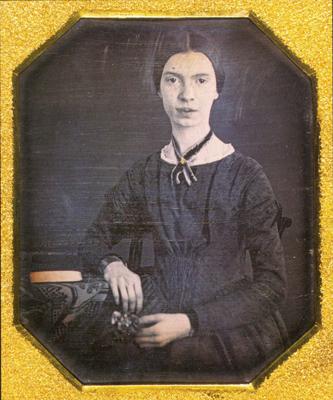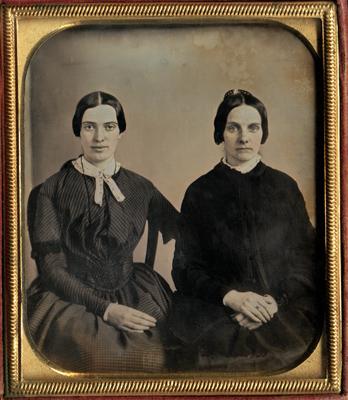By William Sweet
Imagine having the whole world judge you on a single snapshot—one taken when you were 16.
It sounds like the beginning of some cringe-inducing Facebook horror story, but in this case it’s the story of the enigmatic Emily Dickinson.
Though she left behind a substantial body of poems and letters, our only image of the “Belle of Amherst” has always been a single photograph taken of her as a teenager in 1847, years before she wrote any of her known poems. Reportedly, she did not like the portrait, and her family felt it was not a good likeness. Nonetheless, that photograph—a possession of Amherst College Archives and Special Collections—is the source for countless copies and interpretations, from paintings to dolls to computer-animated shorts.

Hence the excitement now emanating from Archives and from Amherst’s Emily Dickinson Museum, and spreading to The New York Times, The Guardian and other media outlets, over a recently discovered daguerreotype that some experts say is a picture of Dickinson when she was 30.
Michael Kelly, head of Archives and Special Collections, believes that if the new photograph is indeed of Dickinson, it may well change many people’s assumptions about the poet. “In this new one, she is staring straight into the camera,” he says. “She is a very self-possessed woman.”

Several times in the past, possible photographs of Dickinson have emerged, only to have been discredited by experts. What’s different now? Two major factors are Emily’s eyes and Emily’s friend.
The new daguerreotype—possibly taken in 1859 or 1860—depicts two women seated side by side. A collector (who chooses to remain anonymous) purchased it at an estate sale offered by a Springfield, Mass., junk dealer in 1995. According to the Emily Dickinson Museum, the buyer, on a hunch that the woman on the left was Dickinson, set out to prove his theory by trying to determine who the other woman might be.
He eventually identified the second woman as Catherine Scott Turner (later Anthon). Two distinctive moles below either side of her mouth match those in other portraits of Turner, who was a Dickinson family friend.
Archives has a copy of this “new” daguerreotype, as does the Emily Dickinson Museum. Both copies were commissioned by the owner of the original and photographed by a Canadian daguerreotypist in 2009. Since then, experts have been closely examining the photograph, and the results have been encouraging.
“In Photoshop, it’s a crazy-perfect fit” between the 1847 Dickinson portrait and the new daguerreotype, says Kelly.
But the evidence goes well beyond Photoshop. The director of neuro-ophthalmology at Dartmouth’s Geisel School of Medicine, Dr. Susan Pepin, studied the eyes in the new image and compared them with Dickinson’s eyes in her 1847 portrait. (Polly Longsworth, historian and member of the board of governors of the Emily Dickinson Museum, facilitated Pepin’s report.) Pepin has long been interested in Dickinson’s eye problems, which include a recognizable astigmatism in one eye. Using enlarged images of both daguerreotypes, she took precise measurements of distinct characteristics of the eyes. “I believe strongly,” she wrote in her report, “that these are the same people.” Other facial features Pepin finds identical in both portraits are the right earlobe and the area between the nose and upper lip.
Then there’s the clothing. The museum’s collection includes a swatch of blue-checked fabric that looks a lot like that worn by the woman on the left in the photograph. While the dress in the photo was outdated by the late 1850s, Dickinson was not known for being fashion-forward. Helping to date the photo is the fact that Turner, whose first husband died in 1857, is wearing “widow’s black.”
“Dickinson’s most prolific period of writing,” says Jane Wald, executive director of the Dickinson museum, “occurred while she was in her early 30s.” If the striking photograph is in fact of Dickinson, the world is finally glimpsing the poet at her prime.